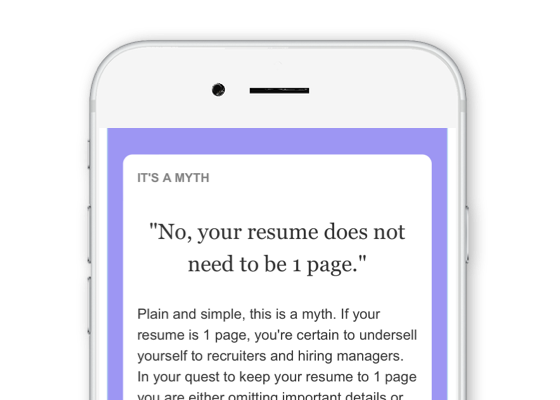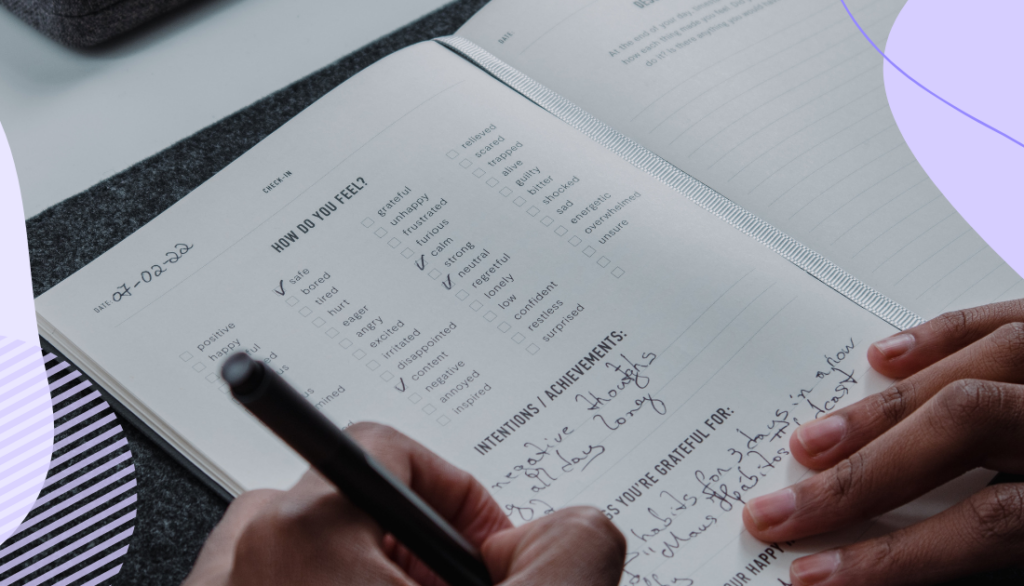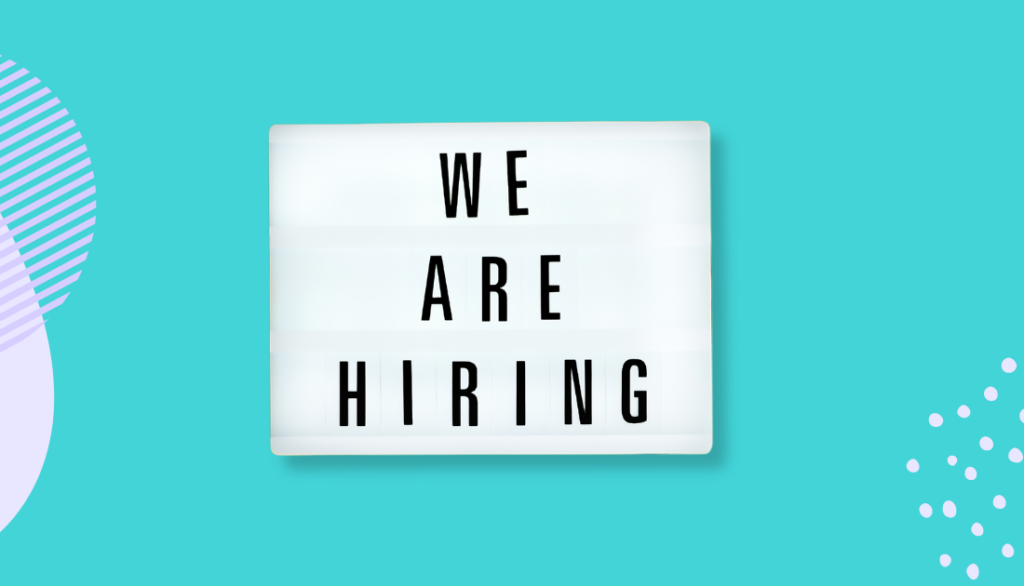8 min read
How to Write a UX Resume to Stand Out and Get More Interviews
9 min read
9 min read

Recruiters and hiring managers spend seconds scanning your resume to find out crucial information about your skills and experience. If that information is hard to find, it could cost you job interviews and ultimately job offers. Even if you are not a visual designer, you must consider the design and content of your resume. How you layout your resume, the fonts and colors, whether it’s one or two columns all matter. Every little detail impacts whether or not the user of your resume can find the information they’re looking for.
In UX and design, there’s an immense amount of focus put on the UX portfolio, and justifiably so. The portfolio is likely where most recruiters and hiring managers spend the most time. Why? Because your portfolio is like evidence in a legal case. It provides evidence that you have the skills that they are looking for.
However, a huge mistake that many UX and design professionals make is that they leave their resume until last, or don’t give it any attention at all. The reality is that recruiters and hiring managers pay attention to and evaluate all of your content — your resume, LinkedIn profile, and your portfolio. It’s worth stating again, it’s not just about your portfolio!
If you have an excellent portfolio yet your resume is a disaster, what does that say about you? First impressions matter across all of the content that goes along with your application.
You have no control over what someone looks at first, be it your resume, LinkedIn, portfolio, website, cover letter, Twitter profile or something else. So you must make sure that everything delivers an awesome first impression, including your UX resume. To create an awesome UX resume that stands out, you will need to understand:
- What the user of your resume is looking for
- The anatomy of your resume
- Mistakes you don’t want to make in your resume
- A few strategic tips to help you stand out
- If you really need to try and format it to be read by applicant tracking systems
Featured Resource
Get the UX Portfolio Strategy Builder. It will help you decide which format is best for your UX portfolio.
Applying UX principles to your UX resume
After reviewing hundreds of UX resumes from students in my UX Portfolio Formula programs, I’ve noticed a common problem, too many designers do not consider the UX of their resume!
As designers and user experience professionals, there’s a tendency to either:
- Overly design the resume to the point that it’s a distraction from the actual content
- Give no regard to the design of the resume, making it extremely difficult for the reader
The good news is there’s a happy medium, and this starts with understanding the user of your resume. Put yourself in their shoes — remember they are busy people! They sometimes have hundreds of applicants for each role. They aren’t literally going to read every word on your resume. They are going to quickly skim and scan it to determine if they even should look at your portfolio or invite you for an initial chat.
So what are the needs of the reader of your resume? What are their goals? What information are they looking for?
Section-by-section anatomy of an effective UX resume
To help make your resume as scannable and readable as possible for the user, you need to consider the questions that the reader wants to find the answers to on your resume.
The person hiring you or the person in the HR department want quick answers to questions such as:
- What does this person do?
- Where have they worked?
- What have they done?
- What types of projects have they worked on?
- What are they skilled at?
- What’s their education?
- What’s unique about them?
Armed with these questions, you can more easily identify the sections that your resume should have and the hierarchy of information that people are looking for. When someone quickly scans or glances at your resume, there is key information that you want to stand out.
3 mistakes to avoid when creating your UX resume
The questions my UX Portfolio Formula students ask about designing a resume and what to include have made it clear that there are a lot of myths and misunderstandings on the topic. Let’s address some of these trends because some of them are instant turn-offs for recruiters and hiring managers:
1. Do not limit your resume to one page
I don’t know who started this myth, but it’s not true. Trying to put everything on one page will 99% of the time, mean that you’re compromising the readability of your resume. You’ll make the font size smaller to fit it on one page. Or worse, you’ll leave out information, only scratching the surface of what you did for each role.
So how long should your resume be? It depends. A resume that’s two pages, but has small fonts and poor spacing could feel long. The same resume could span three or four pages, but with proper font size and spacing, it will be much more readable and scannable.
2. Do not include charts or graphs of your skills
There’s a trend right now in resumes to visualize and rank your skills. The problem is that what you consider to be an “expert” in, is your opinion. The hiring manager’s standard for what qualifies as “expert” may be totally different. It’s subjective.
Stop ranking your skills through charts and graphs on your resume. This is a turn-off for many, many recruiters and hiring manager and provides little value for them, as the user of your UX resume.
3. Do not overly design your resume
Excessive design on your resume only distracts people from the content. Your resume is not the time to flex your design skills. Less is more. Don’t use watermarks, excessive iconography, a personal logo, whimsical or too many fonts, multiple colors, or excessive emojis.
Design elements such as these only take up valuable space and distract people from the content of your resume.
3 practical UX & design tips to write an effective resume
The resume is often the first line of defense. It gets the first glance, along with your LinkedIn profile. The quality of your resume, including both the content and the formatting of it, can be the deciding factor for whether or not you move to the next step.
To increase the chances that your resume stands out, do these 3 things:
1. Tailor your resume to each role you apply to
Before you apply to a role, you should devour the job description because that’s where you can find out exactly what recruiters and hiring managers are looking for. Based on what you find in the job description, use this to tailor your resume for each role. By tailoring you could:
- Remove irrelevant information
- Re-write bullet points so key skills or experience stands out
- Rearrange information based on what they’re looking for
2. Think of yourself as a product
The company is hiring you to do a job for them. What do great products do? They don’t just talk about their features. Instead, they highlight their benefits. By benefits, focus on the outcomes you’ve achieved. For past projects you worked on, what happened? What was the benefit to the team, business, or product?
An example bullet point on your resume might say:
“I was responsible for creating the user-flows and wireframes.”
That’s pretty generic. That’s talking about “features” and you need to go deeper. What other context can you provide to let people know more about what project? Instead, you could write:
“I was responsible for redesigning the checkout user-flow, and creating wireframes for the new mobile experience. This helped increase checkout conversion by 0.5% which resulted in an additional $100,000 monthly revenue.”
This tells much more of a story around what you did for that project. It provides context and it also addresses benefits and outcomes of the work you did.
Quick tip: Lean on your past case studies to see what wins you can pull that might be worth including in your resume. If you need support writing better case studies, check out this free Google Doc Case Study Template.
3. Include a title and a personal elevator pitch
Often times, especially in UX, job titles mean different things to different people. Ask 10 people what a “UX Designer” specifically does, and you’ll get 10 different answers. I recommend that you not only give yourself some type of title, but also have an elevator pitch. Your title quickly lets people know what you do at a high level. The elevator pitch helps clarify exactly what you do, and what you don’t do.
The personal elevator pitch is also a great place to give a glimpse of your personality or any other differentiating information such as languages you speak, or industries you’re well versed in. Highlight various information that may apply specifically to the role you’re applying to, because from now on you’ll tailor your resume to each role you apply to!
First impressions matter, give your UX resume the attention it deserves
You will be judged by the quality of your resume.
If you can’t give enough care to making it readable, establishing hierarchy, organizing information, and applying basic visual design principles, then what does that say about the work you’ll do if you’re hired?
Although the resume may not get you hired, it can be an instant turn-off if it’s hard to read, too long, doesn’t go into enough detail, or is overly designed.
To truly stand out, you must make sure your resume has the right balance of content and design. By considering the users of your resume and writing and designing the content to meet their needs, you’ll be far more likely to stand out.









